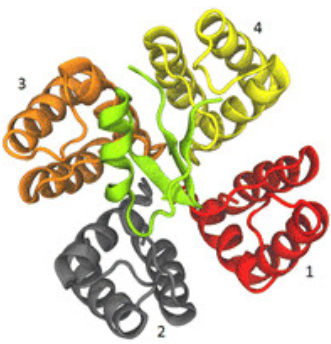- Home
-
Screening
- Ionic Screening Service
-
Ionic Screening Panel
- Sodium Channels
- Potassium Channels
- Chloride Channels
- Calcium Channels
- TRP Channels
- ATP gated P2X Channels
- ASICs
- Nicotinic Acetylcholine Receptors
- Ionotropic Glutamate-gated Receptors
- GABAa Receptors
- Glycine Receptors
- 5-HT Receptors3
- Cystic Fibrosis Transmembrane Conductance Regulators (CFTR)
- Other Ion Channels
- Stable Cell Lines
- Cardiology
- Neurology
- Ophthalmology
-
Platform
-
Experiment Systems
- Xenopus Oocyte Screening Model
- Acute Isolated Cardiomyocytes
- Acute Dissociated Neurons
- Primary Cultured Neurons
- Cultured Neuronal Cell Lines
- iPSC-derived Cardiomyocytes/Neurons
- Acute/Cultured Organotypic Brain Slices
- Oxygen Glucose Deprivation Model
- 3D Cell Culture
- iPSC-derived Neurons
- Isolation and culture of neural stem/progenitor cells
- Animal Models
- Techinques
- Resource
- Equipment
-
Experiment Systems
- Order
- Careers
- Home
- Symbol Search
- KCNA6
KCNA6
| Catalog | Product Name | Gene Name | Species | Morphology | Price |
|---|---|---|---|---|---|
| ACC-RI0031 | Human KCNA6 Stable Cell Line-CHO | KCNA6 | Human | Epithelial-like | INQUIRY |
Potassium voltage-gated channel subfamily member 6, also known as Kv1.6, is a protein encoded by the KCNA6 gene. Kv1.6 (also known as HBK2; FLJ25134), encoded by the KCNA6 gene, is a member of a potassium channel belonging to the voltage-gated and shaker-related subfamily. This member contains six transmembrane domains, which are repeated shaker type in the fourth part. These subunits also behave as delayed rectifiers in homologous combinations. The channel is activated at 50 mV and semi-activated at -20 mV. The coding region of this gene is an intron-free region, which aggregates with the KCNA1 and KCNA5 genes on chromosome 12.
KCNA6 Clone
Grupe et al. (1990) isolated a cDNA encoding the KCNA6 protein, which they termed HBK2 (human brain potassium channel-2), by screening a human fetal cDNA library with rat RCK3 potassium channel cDNA. Later, the researchers also cloned the cDNA corresponding to the rat homolog RCK2. The comparative study found that the predicted 529 amino acid HBK2 protein was 94% homologous to RCK2.

Figure 1. The Structures of Kv1.6. (Oksana Nekrasova, et al.; 2017)
The study found that Kv1.6 was present not only in human cardiac fibroblasts, but also in many more other ion channels, as well as in mouse colonic myocytes. The α subunits of both Kv1.1 and Kv1.6 channels are expressed in the retinal ganglion cell layer (GCL) of rats on postnatal day 5 (P5). GCL-expressed Kv1.6 channels are already at high levels at P1. They are upregulated postnatally and alter their pattern and distribution in an isoform-specific manner.
KCNA6 Function
KCNA6 protein is involved in the formation of voltage-gated potassium channels for transmembrane potassium transport in excitable membranes. The channel is a tetrameric potassium ion-selective channel, and potassium ions pass through the channel according to its electrochemical gradient. Channels alternate between open and closed conformations in response to voltage differences across the membrane. The channels that KCNA6 proteins participate in can form functional homotetrameric channels and heterotetrameric channels, which contain variable ratios of KCNA1, KCNA2, KCNA4, KCNA6, and possibly other family members. The channel properties depend on the type of alpha subunit that is part of the channel. Channel activity is regulated by the beta subunit of the channel, which regulates the subcellular location of the subunit and promotes rapid inactivation. The homotetrameric channel of KCNA6 protein shows fast activation and slow inactivation properties.
Studies have found that KCNA6 is involved in regulating the excitability of sensory neurons. In addition to being responsible for membrane repolarization after action potential initiation, Kv1.6, like other voltage-gated K+ channels, regulates synaptic transmission and secretion from endocrine cells, such as insulin from islet cells. Fundamental electrophysiological properties of Kv channels have important implications for regulating the shape, frequency, and duration of cardiac action potentials.
KCNA6 and Disease
Cerebrospinal fluid (CSF) from amyotrophic lateral sclerosis (ALS) patients (ALS-CSF) has the potential to disrupt ion channel expression, specifically Na(v)1.6 and Na(v)1.6, in neonatal rat spinal cord motor neurons in vivo and in vitro K(v)1.6 Channels. It was found that the expression of Na(v)1.6 and K(v)1.6 channels was decreased in motor neurons in the ALS-CSF treated group. It has also been reported that KCNA6 is involved in pain perception, for example, the Kv1.6 channel may be involved in the failure of multimodal nociceptive C fibers associated with diabetic hyperalgesia. Furthermore, cholinergic modulation of arterial luminal diameter involves function-related roles of Kv1.6 channels.
References
- Gunasekaran R et al.; Exposure to cerebrospinal fluid of sporadic amyotrophic lateral sclerosis patients alters Nav1.6 and Kv1.6 channel expression in rat spinal motor neurons. Brain Res.. 2009, 1255:170-9.
- Höltje M et al.; Differential distribution of voltage-gated potassium channels Kv 1.1-Kv1.6 in the rat retina during development. J. Neurosci. Res.. 2007, 85 (19-33).
- Al-Sabi A, et al.; Position-dependent attenuation by Kv1.6 of N-type inactivation of Kv1.4-containing channels. Biochem J. 2011, 438(2):389-96.
- Grupe, A., et al.; Cloning and expression of a human voltage-gated potassium channel: a novel member of the RCK potassium channel family. EMBO J. 1990, 9: 1749-1756.
- Oksana Nekrasova, et al.; Complexes of Peptide Blockers with Kv1.6 Pore Domain: Molecular Modeling and Studies with KcsA-Kv1.6 Channel. Journal of Neuroimmune Pharmacology. 2017, 12(2).
Inquiry
